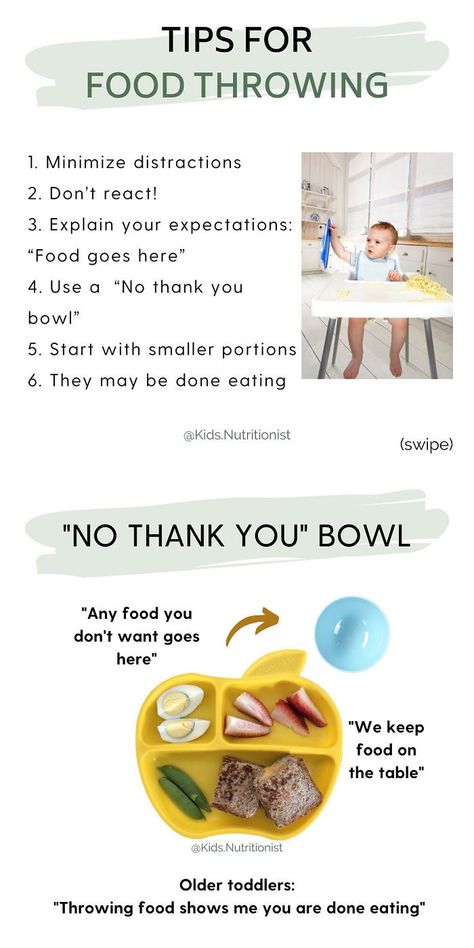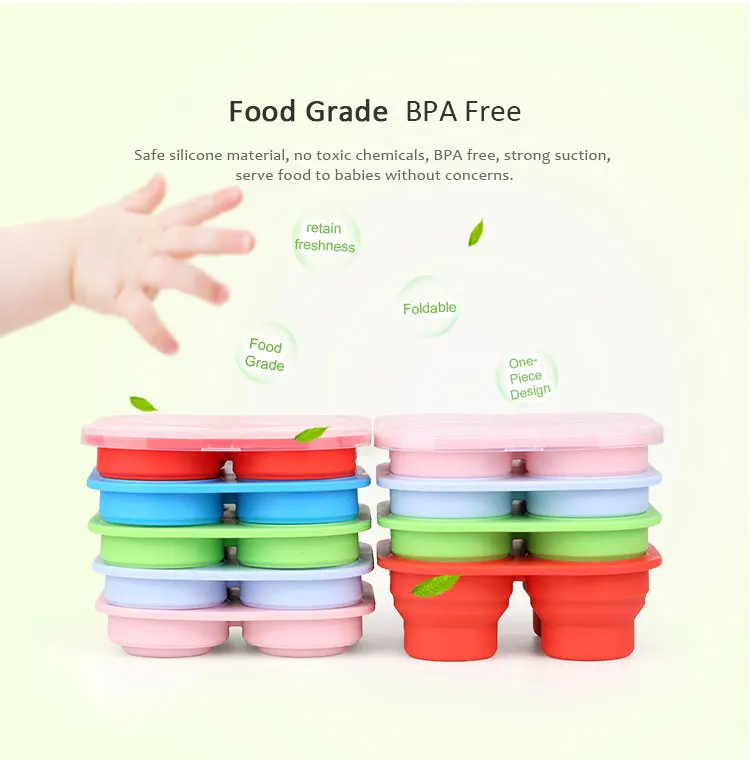Baby throws food
How to stop your baby from throwing food off the high chair
It's normal, but it sure is frustrating. Here's how to deal if your baby keeps throwing food during mealtime.
The first few times your baby grabs food off her high-chair tray and throws it on the floor, you laugh, pick it up, smile and say in your gentlest voice, “No throwing, honey.” You might even snap a picture because it’s so adorable. But when the cuteness wears off, and food throwing becomes a game—one where you’re the loser—it can become frustrating (the mess!) and worrisome (there’s more food on the floor and wall than in your baby’s mouth!).
Food throwing is a popular topic in my nutrition counselling practice; most parents deal with it at some point with their little ones. I always reassure my clients that it’s normal—most kids go through a food throwing phase in their early years. Mine sure did. Just the other day, I lunged towards our highchair to catch a full bowl of uneaten spaghetti from my one-year-old’s hands (I was unsuccessful) while simultaneously exclaiming, “Nooooooo!”. So I definitely understand the frustration.
In many cases, food throwing is a result of learning how to control and coordinate food, and developing fine motor skills. In fact, in babies ages six to eight months, food throwing is rarely intentional. For older babies (nine to 12 months), it becomes an exercise in learning cause-and-effect. What will happen if I throw this bowl full of oatmeal? Will it make a noise? Where will it go? Will it come back? Fast-forward to toddlerhood, and food throwing becomes an intentional attempt to trigger a reaction—positive or negative—and can easily turn into a power struggle, creating stress at mealtimes for everyone.
55 things nobody told me about my baby's first year
Here are five tips to stop food throwing, and keep family meals positive (and as mess-free as possible!):
1.
 Don’t react
Don’t reactBabies and toddlers are natural attention seekers who thrive off a reaction. To avoid encouraging the behaviour, do your best to stay calm and neutral. Pick up the food (but don’t return it to the tray or table) and say something like “Food belongs on the tray” or “Food stays on the table.”
Be consistent with the phrase you use, and be sure to use one that indicates what you do want to happen, as opposed to a phrase like, “We don’t throw food,” which indicates what you don’t want to happen. By not returning food to the tray, you’re teaching your baby that once it’s thrown, it’s gone—they learn quickly!
2. Get the whole family on board
Talk to older siblings about why it’s important not to react to food throwing. As a mom of three, I know that my two older kids are often tempted to egg on my youngest when he throws food. It becomes their mealtime entertainment! But this attention fuels the food-throwing fire and usually intensifies it. Make a family plan to stay really calm and not react when the young one throws food. Make it a challenge to see who can be the calmest.
Make a family plan to stay really calm and not react when the young one throws food. Make it a challenge to see who can be the calmest.
3. Consider ditching the tray
When older babies are learning about gravity and can see over the edge of a tray, it makes the food throwing game more enticing . The fact is, watching the dog scarfing down a piece of meat or the marinara sauce splattering all over the floor is fun! Consider removing the tray, and pushing the highchair up to the table so it’s harder to see the floor. Your baby will now be focused more on his food and interacting with other family members, which is less isolating and includes them more in the family meal. Bonus: It also offers more opportunity to model healthy eating.
4. Put the dog outside
When you’re a baby, what’s more fun than throwing food and watching the dog gobble it up and beg for more? If you can, let the dog out during mealtimes (or even just remove him from the kitchen) when you have little ones in the food-throwing stage.
5. Take it as a sign
Flinging food might very well be your baby’s last-resort effort to tell you “I’m full!” It’s easy to have a feeding agenda—you serve an amount of food that you believe is right for your baby, so you expect (and in some cases pressure) your child to eat it. When he turns his head, tightens his lips or pushes food away, it’s a sign that he’s full, and you need to respect that, and let your child determine how much he will eat at each meal and snack. Too often, well-meaning parents don’t recognize these signs, or choose to ignore them, by pushing food closer to their baby or following the baby’s mouth with a spoon, because they want to make sure that their baby receives enough nutrition.
Babies are born intuitive eaters—they know how much they need and when to stop, so we need to trust this and not pressure them to eat more. By offering five to six eating opportunities daily (meals and snacks), with lots of variety, we can rest assured that our little ones will meet their nutrition needs over the period of a week. Serve portions that aren’t large or overwhelming (this in itself can trigger food-throwing), offer more if your child indicates so, and take the pressure off. This will make for a much more pleasant eating experience, and nurtures your child’s natural ability to eat intuitively.
Serve portions that aren’t large or overwhelming (this in itself can trigger food-throwing), offer more if your child indicates so, and take the pressure off. This will make for a much more pleasant eating experience, and nurtures your child’s natural ability to eat intuitively.
If you can weather the food-throwing storm, stay calm and focus on teaching your baby or toddler what you want them to do (keep food on the tray or table), it will pass and mealtimes will remain positive and low-stress. And you can invite the dog back in post-meal for clean up!
Read more:
What finger foods to feed your baby—and what foods to avoid
Is your baby ready for solid foods?
Stay in touch
Subscribe to Today's Parent's daily newsletter for our best parenting news, tips, essays and recipes.- Email*
- CAPTCHA
- Consent*
Yes, I would like to receive Today's Parent's newsletter.
 I understand I can unsubscribe at any time.**
I understand I can unsubscribe at any time.**
FILED UNDER: baby behaviour baby development Baby first food baby food service seo
How to Stop a Baby From Throwing Food — Malina Malkani
Babies use their hands and mouths to explore the world...
They often eat with pleasure and have no problem smearing food all over themselves and the table. I find it to be such a delight to watch a baby discover new flavors and textures.
Then-
Splat.
There goes the food onto the floor.
Is your baby throwing food? It may help to hear that food throwing during infancy is common, although that doesn’t make dealing with it any easier!
Between a baby smeared with spaghetti sauce and a floor covered in noodles, you already have enough to clean up without having to deal with thrown food. And, providing nourishment isn't the only benefit your baby gets from feedings. Meals offer opportunities to teach table manners, positive eating behaviors, and how to eat at the table with adults (so you can confidently take them to restaurants!)
In this article, I'll give you tips on how to stop your baby from throwing food. But, first, let's dig in on why your 6 - 12 month old babies tend to throw food in the first place.
But, first, let's dig in on why your 6 - 12 month old babies tend to throw food in the first place.
Why do Babies Throw Food on the Floor?
Unable to hold food or utensils
By 6 to 12 months, babies can hold their heads up, sit on their own, and self-feed bites of food. However, some babies haven't yet developed the fine motor skills they need to hold utensils or pick up tiny foods like Cheerios. As a result, a frustrated baby may push the food onto the floor.
Not hungry
Food throwing is sometimes a baby’s way of communicating that they are not hungry or have finished eating.
Infants can't verbally communicate with caregivers, so they express their needs for cuddles, food and thirst through sounds and movements. Just because it's mealtime doesn't necessarily mean your baby is hungry. So, sometimes they let you know they don't want to eat the best way they know how - by throwing food.
Starting to learn cause and effect
Around 8 months old, babies learn about relationships between events. For example, they realize that they can do simple actions to get a result, including getting a reaction from others.
For example, they realize that they can do simple actions to get a result, including getting a reaction from others.
Babies notice that they can manipulate objects to make them do things, such as banging to make a sound, pressing a button on a toy that leads to action, or throwing food to hear the sounds and sight it makes when it lands. They are also learning what they can do to get your reaction.
Overwhelmed by large portions
A large plate full of food puts a lot of pressure on little appetites and bellies, especially while introducing a new food. Even a hungry baby might reject a large plate of food.
Where do they start? Are they going to be forced to eat it all?
Typically power struggles start a little later, during toddlerhood. However, babies try to express what they want and don't like, including during meal time and often by throwing food.
It’s fun
Throwing food on the floor and watching mommy retrieve it might be a game to your baby.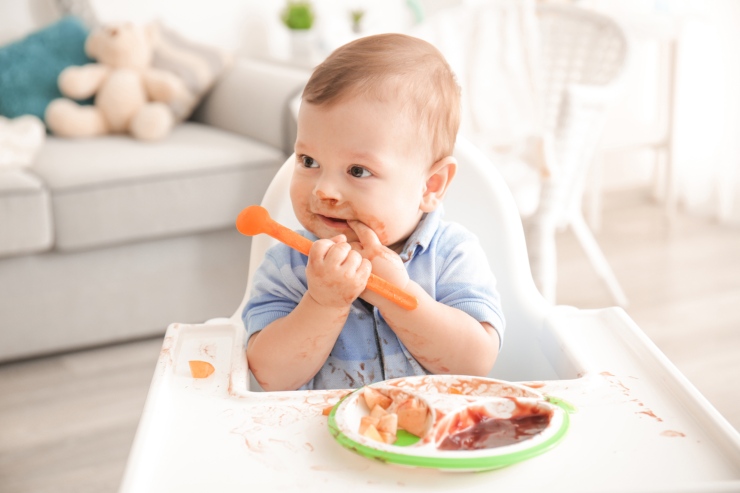 They’ve discovered that they can do something that causes you to do something.
They’ve discovered that they can do something that causes you to do something.
Eating is a sensory experience for little ones. Babies explore different textures with their mouths and hands. So, it's fun to smear purees all over their face and high chair tray. Watching babies get so much pleasure from experimenting with food can be such a joy, despite the inevitable clean up later.
9 Tips to Stop a Baby from Throwing Food
It's never too early to start teaching age-appropriate table manners. Babies learn how to behave in social situations through parent modeling and gentle corrections.
Infants don’t have the verbal language yet to learn from what they’re told. So parents need to find creative ways to teach infants. Here are a few tips to help you get to the bottom of your baby’s food throwing.
1. Pick the right highchair
…and/or make comfortable seating for baby a priority during meals. There are many different highchairs on the market, but some make seating more comfortable and less frustrating for babies.
Look for highchairs that can keep your baby seated upright and that an adjustable footrest to support your baby’s feet. This position helps them stay alert and comfortable during feedings and can drastically reduce food throwing. A high chair that's easy to clean is a bonus for you!
You can also try removing the high chair tray and pushing your baby’s highchair right up to the table. When the baby is seated at the table, throwing food on the floor is more challenging, and babies generally are more engaged with others at the table and less likely to throw food as a result.
2. Wait until your baby is hungry
Hungry babies are more alert and interested in food at meal times.
A structured but flexible baby feeding schedule is one way to help you avoid the trap of offering snacks all day and ending up with a baby who is more interested in throwing than eating at mealtimes. (Note: there is no need for the schedule to be rigid, and we never want to limit a baby's food if they're hungry).
Whether or not you follow a feeding schedule, you and your baby can still benefit from responsive feeding techniques. Responsive feeding is a feeding style that encourages parents to recognize and respond to their baby's hunger and fullness cues.
3. Don’t react
Let meal times be a positive experience!
A parent's feeding and parenting style can affect a child's food choices and behaviors for years to come. Not reacting to your baby's food throwing behaviors is one way to help create a positive mealtime environment. For example, if your baby throws food on the floor, leave it there without reacting, getting upset or picking it up.
Studies show that an authoritative feeding style is associated with the most positive outcomes for children, including better academic performance in school. The authoritative style encourages children to eat through supportive behaviors. Parents that use this feeding style provide rules and sensitively explain the rules.
4.
 Serve small portions
Serve small portionsOffering a large portion of food or introducing too many new foods at once can be overwhelming and a recipe for food throwing. Set a realistic feeding expectation for your baby by providing small amounts of food and introducing new foods sensitively.
Young children only need small bites of food, so making every bite count with nutrient-rich foods is essential. To help illustrate this concept, the Dietary Guidelines for Americans recommends that caregivers avoid giving infants and toddlers foods and drinks that have added sugars and/or are high in sodium.
5. Let them feed themselves
You can teach babies to use utensils when they eat solid foods around 6 months old. At first, they’ll probably use the spoon to play with instead of to eat.
Baby-led weaning encourages age-appropriate self-feeding. Parents can offer finger foods and other first foods babies can self-feed and swallow. Babies have the skills to consume finger foods at around 5-7 months old.
6. Switch up the plate
Sometimes babies like to throw the plate instead of pieces of food. Try serving the food on the highchair tray or use a plate or bowl with suction on the bottom, so it stays on the table or tray.
If your baby empties the dish because they want to play with the dish, try giving them a clean dish to play with and allow them to eat off the highchair tray.
7. Teach your baby or toddler to use a “no-thank-you bowl”
A "no-thank-you bowl" is an empty bowl placed on or near the baby's tray during meal time, meant for any unwanted foods. Redirect your baby when you suspect that food throwing is coming and say something like, “...we put food we don't want in the ‘no-thank-you bowl!’"
The concept of a "no-thank-you bowl" can provide an extra tool to help reduce food throwing, helps reduce anxiety in babies who don't know what to do with unwanted food, allows babies to honor hunger cues by providing a designated place for food they cannot finish, and still allows babies to explore texture by touching and moving unwanted food to the "no-thank-you bowl"
8.
 Teach your baby sign language
Teach your baby sign languageThrowing food may be the only way your baby knows how to express when they’re full.
An infant's ability to understand cause and effect can help them learn a new behavior. Teach your baby to use sign language by demonstrating simple signs they can do to signal when they want more or are done with their meal.
9. Put the dog in another room during meals
If you have one, consider putting the dog in another room during times when you are feeding your baby. There is nothing more fun for babies than throwing food to their furry siblings and watching their dog’s delight in sharing the meal. Unfortunately that fun can be so entertaining that it encourages and reinforces food throwing behaviors more and more over time.
Final Thoughts on Baby Food Throwing
Babies are messy eaters! No matter what, there will be a certain amount of food on the tray and floor to clean up afterward.
In my experience as a mom and pediatric dietitian, the best advice is not to react, feed babies when hungry, and offer small amounts of food at a time. A hungry baby will usually eat the one piece of food they have before them instead of throwing it.
A hungry baby will usually eat the one piece of food they have before them instead of throwing it.
If you’re getting ready to start your baby on solids, download my FREE Baby-Led Feeding Essential Checklist to make sure you have everything you need to get started. You might also want to check out my new online course for parents, based on my best-selling book which will walk you through the whole process of starting solids using a baby-led approach.
Alternatively, if your baby is almost ready to start solids and you’re looking for someone you trust to map out the entire first 12 weeks of your baby’s solid food feeding journey, check out my new Safe & Simple 12 Week Meal Plan! Over 30 recipes, weekly shopping lists, tons of balanced baby meals, a complete plan for top allergen introduction, & lots of guidance (with photos) on how to safely serve each food.
And if you're looking for personalized nutrition support for yourself, your babies and/or your kids, I am currently accepting new clients in my virtual private practice. Looking forward to meeting you online…
Looking forward to meeting you online…
8 tips on how to wean a child from throwing things, objects and food
What to do if a child has grown up to a crisis of 2 years, often loses his temper, "crazes", starts throwing things, objects and food. How to wean him from this habit? Read on UAUA.info.
Throwing things, objects, and food is a new and enjoyable skill for many children between the ages of 1.5 and 3. Unclenching your fingers and releasing an object requires fine motor skills of your fingers, and eye-hand coordination is also required to not just drop the object, but throw it. No wonder your little one wants to practice this exciting skill! But your desire to wean your child from throwing things is also understandable. nine0005
Read also: Unbearable two-year-olds: what to do if a child at 2 years old does not obey and behaves badly
But you must remember that everything that happens after the throw is also very instructive. The child learns that everything he throws falls down, not up. He cannot pronounce the word "gravity", but he can certainly observe it in action. If a child throws a ball, it bounces. If he tosses a plum, it breaks.
The child learns that everything he throws falls down, not up. He cannot pronounce the word "gravity", but he can certainly observe it in action. If a child throws a ball, it bounces. If he tosses a plum, it breaks.
Of course, spaghetti flying around the kitchen or a pacifier that lands on the sidewalk drive you crazy. But for a child, this is all sheer pleasure. nine0005
child throws toys and objects what to do
the child freaks out and throws things
child throws objects
child throws things
child throws stones
wean a child from throwing things
child throws objects
child throws food
If a child does not throw a rock at a neighbor's window or aim directly at someone, threatening to break his forehead, he should not be scolded or punished. It is useless to try to get a child not to throw things at that age. Instead of worrying about the action itself, limit your "throw" and "target" items. nine0005
nine0005
Show your child what things or objects can be thrown
The child will quickly understand that throwing things, objects and food is impossible if many options are offered, what can and even needs to be thrown. The first is the balls, of course. But other funny things too. For example, throwing pebbles into the river, a two-year-old will really like it, especially.
The idea is to make it clear that you can throw things, but only certain things at certain times in certain places. If a child throws something inappropriate, say, a shoe, calmly pick up the object and say that you can’t throw shoes, but you can throw a ball. nine0005
Stop Aggressive Object Throwing
What to do when a child throws what is impossible? At first, try to ignore it. If a child understands that your attention can be obtained simply by throwing something at someone, he will definitely do it again and again.
If a toddler often throws something at other children, it is important that you stick to the same tactics, as children learn through repetition. If the child starts throwing things, say sternly: “it’s impossible, it hurts so much” and take the child aside for a timeout to make it clear what “No” means and that you need to cool down. nine0005
Most importantly, the timeout should last up to a minute (there is an unspoken rule, how many years - so many minutes) so that the child does not forget why he was stopped and torn away from what he was doing.
If you notice that a child begins to throw objects at other children out of anger, when he is "crazy", explain that you need to express all your experiences in words.
It's okay if the child is judging by your tone or if you're upset by their behavior, but don't let the anger take over. Try not to yell at the child, and never hit him - even on the arm - to wean him from throwing things. nine0005
If the baby continues to rush and hurt, and you have already tried to wean him in any way, you have no choice but to watch what falls into his hands.
Read also: Mom, I don't love you: what to do if a child blackmails with love
Attach toys to the rail in the stroller so that the child cannot throw them
If the child is in a stroller or in a child seat in a car, attach a few toys so that he can easily reach them (carefully tie toys on strings or elastic bands, without leaving long ends, for safety reasons). nine0005
The child will quickly discover that in addition to throwing toys, they can still be pulled back to him. Double the fun for your little one - make the job easier for you.
Clean the room with your child
Do not ask the baby to collect everything that he has scattered. For this age, this task is too difficult. Get on your knees and do all the work together quickly and together, saying "Let's see how fast we collect all the cubes" or "help me find yellow M&Ms." nine0005
Set a good example for your child
Do not neglect such things as simply throwing a pillow on the sofa as an example for the baby.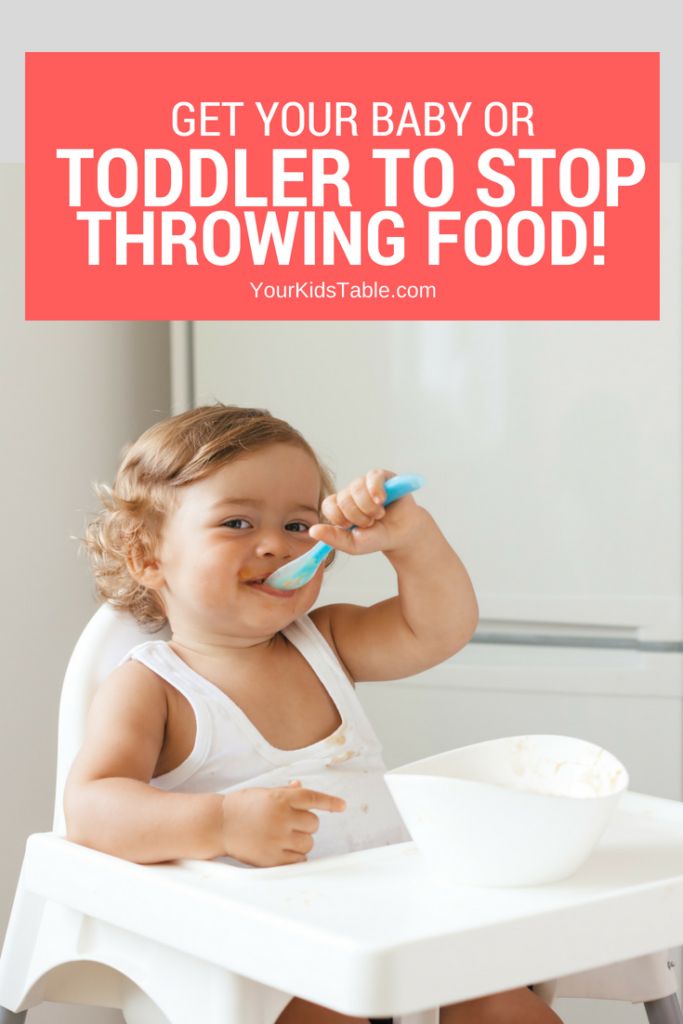 On such objects, you can just teach the child what can be thrown and what not. The next time he throws something “off the list” again, go around the house and together throw socks in the basket, tissues in the trash can, and toys in the toy box.
On such objects, you can just teach the child what can be thrown and what not. The next time he throws something “off the list” again, go around the house and together throw socks in the basket, tissues in the trash can, and toys in the toy box.
Sit nearby while the child eats
This period is quite "dirty" in terms of food intake. But to teach a child not to throw food, you can only sit next to him, and gently, but strictly let's understand that you should not do this every time the child swings at the throw. It is better to grab a hand or a plate in time than to crawl under the table later, collecting crumbs for dinner.
In addition, sitting next to you will make sure that the child chews food well, and not just swallows it in pieces. nine0005
If a child throws food, use children's safety utensils
Don't put your best china on the table when it's time for your baby to eat.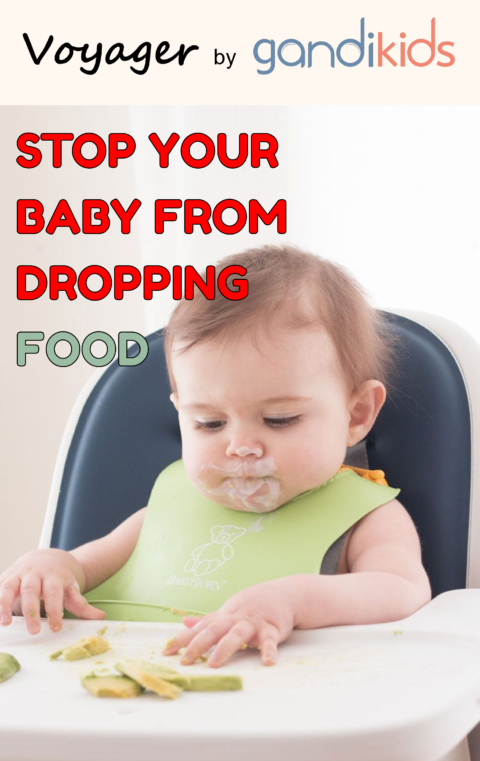 Buy a set of unbreakable tableware for children with straws that can be attached to a table or high chair. Remember that this may save you from scattered dishes, but will not stop the child from trying to tear off the "stuck" plate or glass from the table. nine0005
Buy a set of unbreakable tableware for children with straws that can be attached to a table or high chair. Remember that this may save you from scattered dishes, but will not stop the child from trying to tear off the "stuck" plate or glass from the table. nine0005
If the child rushes to eat, feed him in small portions
If you put small portions in front of the baby and do not report the supplement until he finishes the contents of the plate, then he will be able to throw away less food.
There is no need to force the child to eat everything to the end. Most children don't throw food until they're full and bored. Therefore, no matter how much the child has eaten, if you see that he has lost interest in food, take the plate from under his nose. nine0005
If, nevertheless, something is left in the child’s hands, by accident or on purpose, try not to overexert yourself because of this: we all drop something sometimes, so a piece of bread or cheese on the floor is not so scary.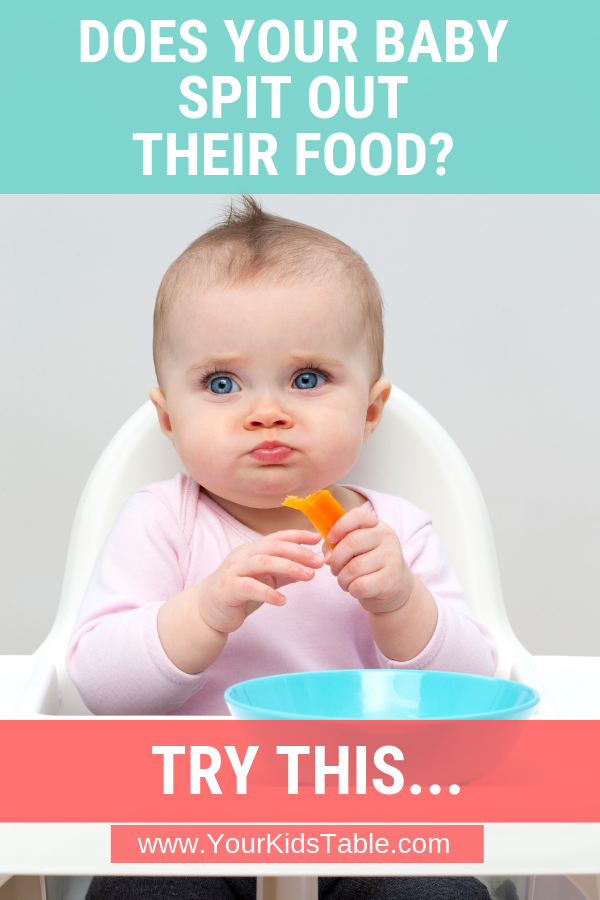
Now you know what to do if the child behaves like a little pig. And How to wean a child from throwing things, objects or food.
Source: www.babycenter.com
Read also: Parenting in Japanese: how children are taught in families and kindergartens
Read also: 5 features of German mothers
Read also: Pamela Druckerman: You won't read about this in a French parenting book
Why does your toddler throw toys and how to react? Dealing with a psychologist and “experienced” mothers
42265
Natalya: “My first child and I don’t know what to do: the baby will soon be a year old, and for two months already, he throws everything that falls into his hands and ignores My point is that you can't do that. I raise my voice, but that doesn't help either! Is this behavior normal for a child, and how to wean it from throwing everything in a row? Help, please, with advice! nine0005
This letter came from a reader last week. Let's figure it out.
How it was with us
Ekaterina Novitskaya tells , the head of the section “Mom on maternity leave”:
– Judging by the children of my immediate environment, to one degree or another, this behavior is characteristic of almost all babies. Personally, it seems to me that you first need to properly build your reaction and not fall into emotions. I myself first try to explain: a thing can break, break, my mother will be upset and cry. If the son does not stop, you will have to take this thing away, completely. I don’t know how pedagogical this is, but in the most critical situations I ask if he wants us to give this thing to someone else who will treat it well. The answer is usually a resounding “no!”. nine0005
Sometimes I make up a similar story on the go and emotionally tell that, for example, a thing was so upset because it was offended that at one fine moment it ran away from home. Then I remind this story on occasion, and in the end the child begins to remember it himself in similar situations - in our case, this is a fairly effective method. I often offer a child and an alternative: “Do you really want to quit something? Take soft toys, light balls and throw as hard as you want. And you can’t throw it away, in any case. ” nine0005
I often offer a child and an alternative: “Do you really want to quit something? Take soft toys, light balls and throw as hard as you want. And you can’t throw it away, in any case. ” nine0005
But even all this does not guarantee a 100% result. In any case, spanking and raising your voice is probably still not worth it. The most important thing is to choose some line of behavior understandable to the child and not retreat, but calmly and consistently adhere to it. Well, in my opinion, all family members should act together.
What's right?
Family and child psychologist Svetlana GlagolaAnd here is what a practicing family and child psychologist from Bobruisk thinks about this Svetlana Glagola :
- If you ask your friends, it turns out that all children start throwing toys at about the same age - about a year. This is a very interesting phenomenon and it lies in the fact that scattering objects for a child is a way of developing thinking.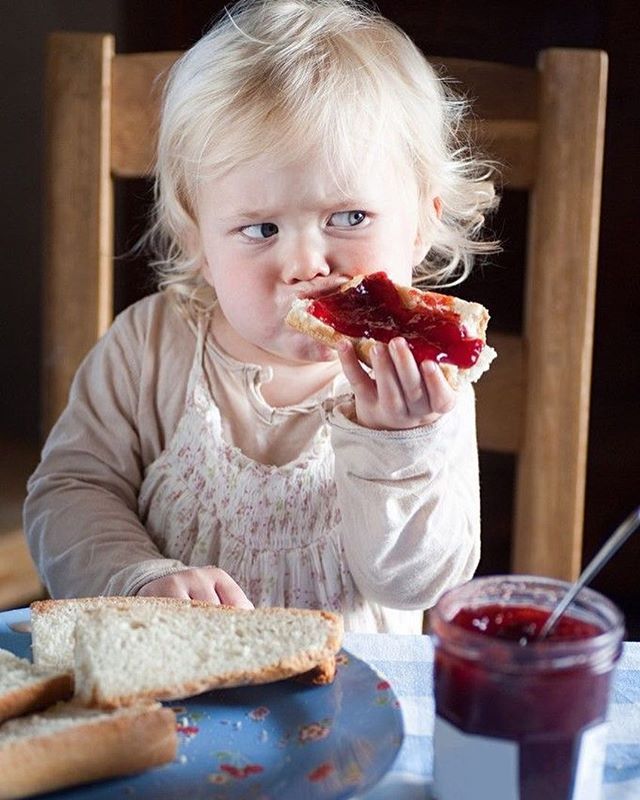
When an adult is about to throw something, he knows exactly what will happen next. Moreover, it is known in advance that glass objects can break, the ball will roll, and the rattle will make noise. Our knowledge, experience, developed thinking is enough for an accurate forecast. nine0005
The child does not have this kind of knowledge. The kid explores this process for quite a long time until he comes to the understanding that he himself is the cause of the noise. Thus, the "I" of the child is formed.
What should parents do?
Be patient and support your child on the path of learning. Over time, he will stop throwing toys and things on his own.
General advice for parents of a child during this period:
• Be attentive to the needs of the child. nine0005
• Remove objects forbidden to him. You can switch the child's attention to something else: water in the bathroom, music.
• Try not to use the word “no” often, otherwise the child will stop responding to it. For life-threatening situations and objects, the word "dangerous" can be used.
For life-threatening situations and objects, the word "dangerous" can be used.
• Remember that even at this age the child must know what he can and cannot do. Avoid "exceptions to the rule".
• Encourage your child to do everything himself. You can give the baby a personal space (for example, a toy box). nine0005
• If you need to leave home, you should warn your child and tell them when you will return, not in hours, but in their usual rituals (for example: I'll be back when you sleep in the afternoon).
• Teach your child. Show how to use different items. Try to reveal their properties.
• Enrich your child's sensory experience: let him touch different surfaces, smell different smells, listen to different sounds.
Pixabay illustrationTips from seasoned moms
This is what Bobruisk mothers said when asked if their children throw toys and other objects.
Yuliya, son 2 years old:
– Yes, he rushes. More often I explain that this is not possible and that it is possible to break a thing.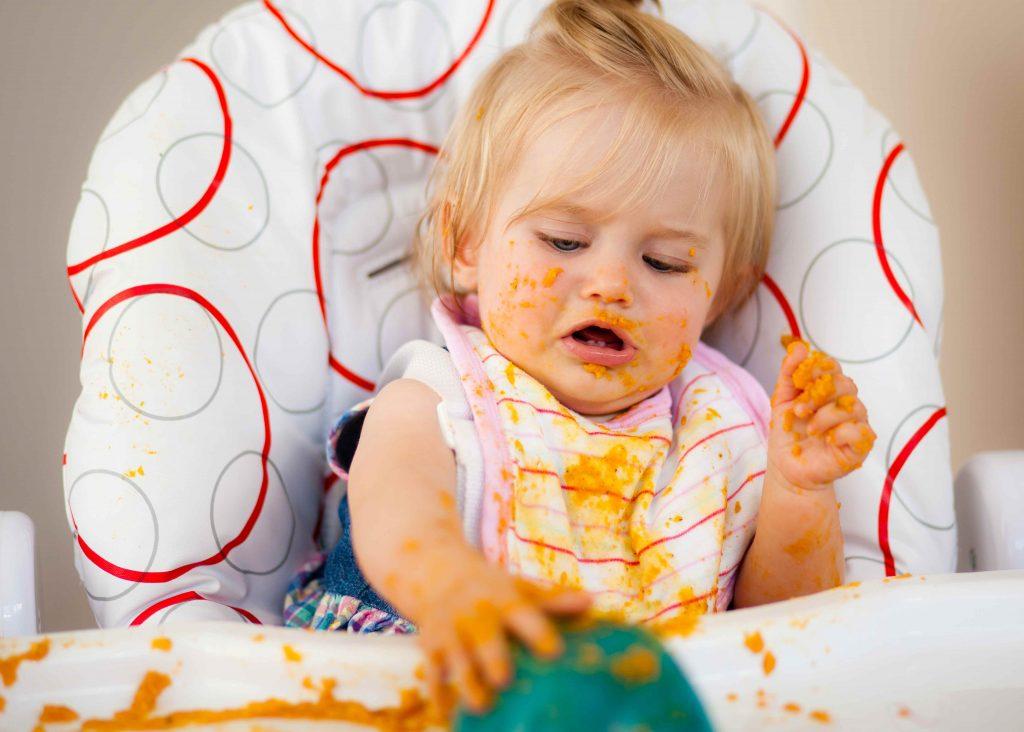 Understands and begins to "regret."
Understands and begins to "regret."
Natalya, son-preschooler:
– Mine rushed, and it didn't matter to him what and how. I unlearned how I went to the garden after a couple of weeks.
Xenia, son two and a half years old:
- We also throw everything at everything. Knows that it can't be done. When I ask why, he replies that he wanted to. I hope we get past this stage soon.
Based on the answers of half a dozen parents interviewed, the age of onset of this period varies in children from about nine months to a little over two years. In their opinion, the general idea that needs to be conveyed to the child can be described as follows: it is possible to throw, but only certain objects at a certain time in a certain place. How to achieve this? nine0005
Below are some recommendations.
It is necessary to show the child an alternative: what can and even should be thrown - say, a ball at the wall, or pieces of paper in the trash can, or dirty socks in the washing machine, or soft toys in the basket, or, finally, pebbles and leaves in a puddle.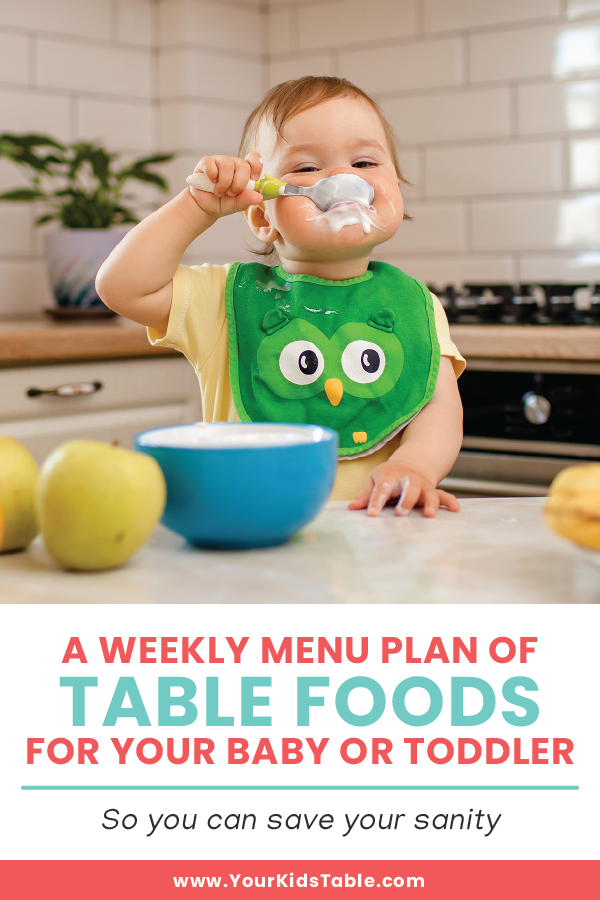
Whenever possible, reactions to scattering, especially violent ones, should be avoided - the child may perceive this as a fail-safe way to attract attention and repeat it on occasion. nine0005
Never scream or spank a child, even on the hand. Explain, making sure the baby is listening. And repeat as many times as needed.
If a child throws something at other people, it is imperative to stop, clearly explain that it hurts and repeat this with every attempt. If the child shows aggression, you need to decisively arrange a break for 1-3 minutes, for example, take him aside so that he clearly understands for what offense the games are stopped. nine0005
We need to clean up together, put things in place, without doing it for the child - let him (by age) help by all means.
If a child throws food, one should sit nearby and control the process, purchase unbreakable dishes and not put a lot of food at once - more often children start throwing food when they are already full.